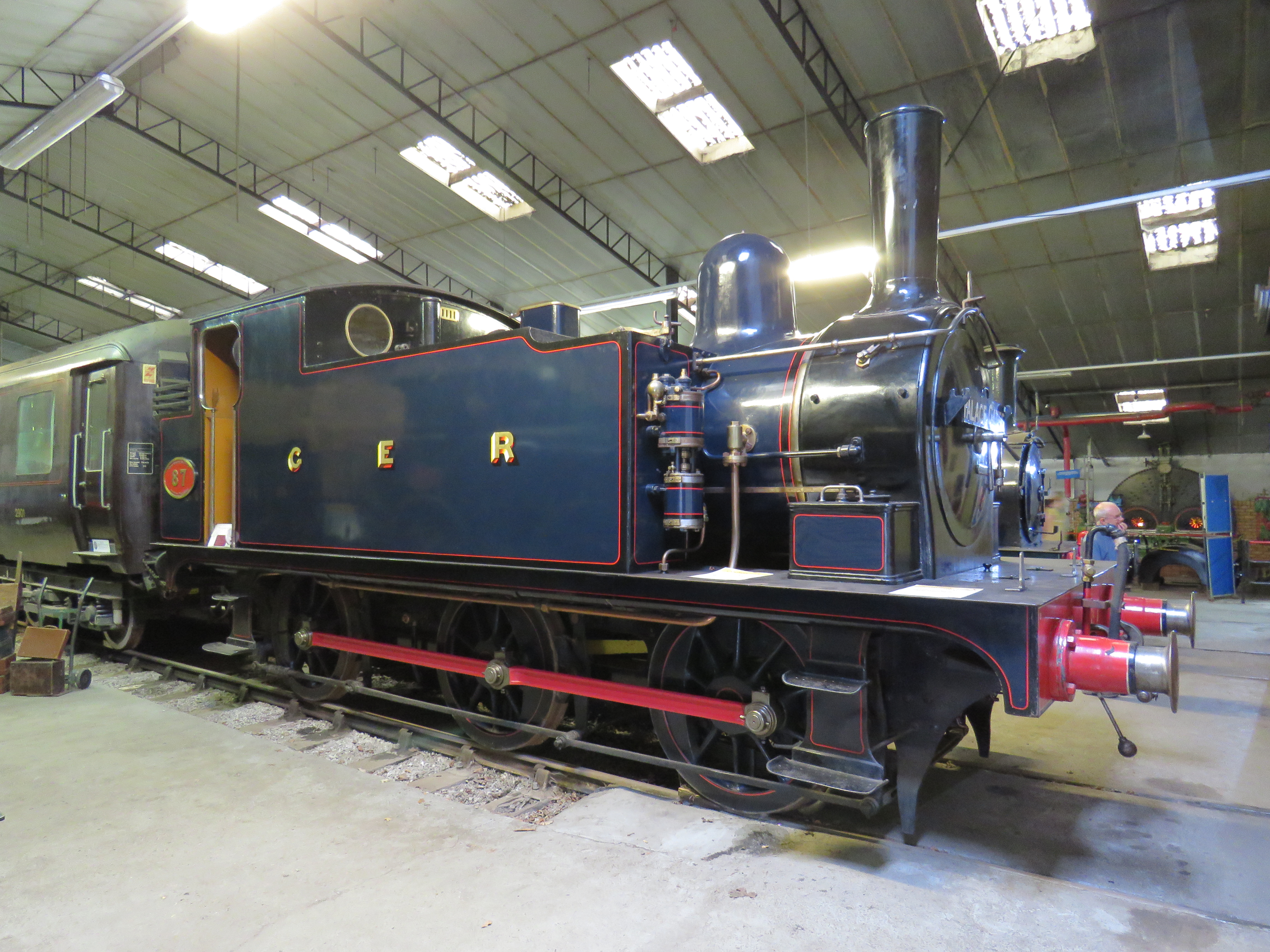GER Class S56 on:
[Wikipedia]
[Google]
[Amazon]
The GER Class S56 was a class of
 GER no. 87 (LNER 7087, 8633, BR 68633) has been preserved, initially at the Clapham Transport Museum, and now at the
GER no. 87 (LNER 7087, 8633, BR 68633) has been preserved, initially at the Clapham Transport Museum, and now at the
— Great Eastern Railway Society
The Holden J67 & J69 (GER Class R24, R24 Rebuilt, & S56) 0-6-0T Locomotives
— LNER Encyclopedia {{LNER Locomotives Great Eastern Railway locomotives, S56 0-6-0T locomotives C n2t locomotives Railway locomotives introduced in 1904 War Department locomotives Standard-gauge steam locomotives of Great Britain
steam
Steam is water vapor, often mixed with air or an aerosol of liquid water droplets. This may occur due to evaporation or due to boiling, where heat is applied until water reaches the enthalpy of vaporization. Saturated or superheated steam is inv ...
s designed by James Holden for the Great Eastern Railway
The Great Eastern Railway (GER) was a pre-grouping British railway company, whose main line linked London Liverpool Street to Norwich and which had other lines through East Anglia. The company was grouped into the London and North Eastern R ...
. Together with some rebuilt examples of GER Class R24, they passed to the London and North Eastern Railway
The London and North Eastern Railway (LNER) was the second largest (after London, Midland and Scottish Railway, LMS) of the "Big Four (British railway companies), Big Four" railway companies created by the Railways Act 1921 in Britain. It ope ...
at the grouping
Grouping generally refers to the creation of one or more groups, or to the groups themselves.
More specifically, grouping may refer to:
* Shot grouping in shooting sports and other uses of firearms
* the use of symbols of grouping in mathemati ...
in 1923, and received the LNER classification J69.
History
The Class S56 were a development of the Class R24, being almost identical, apart from higher boiler pressure and larger water tanks. Twenty were built in 1904 at Stratford Works. All twenty passed to the LNER in 1923. Thirteen class J69 locomotives were lent to the War Department in October 1939, of which five had been built as Class S56. They were sold to the War Department in October 1940, where they were used on theMelbourne
Melbourne ( , ; Boonwurrung language, Boonwurrung/ or ) is the List of Australian capital cities, capital and List of cities in Australia by population, most populous city of the States and territories of Australia, Australian state of Victori ...
and Longmoor Military Railway
The Longmoor Military Railway (LMR) was a British military railway in Hampshire that was built by the Royal Engineers from 1903 to train soldiers on railway construction and operations. The railway ceased operation on 31 October 1969.
Route
...
s. The remaining locomotives were renumbered 8617–8636 in order of construction; however gaps were left where the locomotives sold to the War Department would have been. At nationalisation in 1948, the remainder passed to British Railways, who added 60000 to their number. Post-war withdrawals started in 1958, and by 1962 all had been retired.
Preservation
 GER no. 87 (LNER 7087, 8633, BR 68633) has been preserved, initially at the Clapham Transport Museum, and now at the
GER no. 87 (LNER 7087, 8633, BR 68633) has been preserved, initially at the Clapham Transport Museum, and now at the National Railway Museum
The National Railway Museum (NRM) is a museum in York, England, forming part of the Science Museum Group. The museum tells the story of rail transport in Britain and its impact on society. It is the home of the national collection of historical ...
. It is currently on display at Bressingham Steam Museum
Bressingham Steam & Gardens is a steam museum and gardens located at Bressingham (adjacent to a garden centre), west of Diss, Norfolk, Diss in Norfolk, England. The site has several narrow gauge rail lines and a number of types of steam engines ...
.
References
* * *External links
— Great Eastern Railway Society
The Holden J67 & J69 (GER Class R24, R24 Rebuilt, & S56) 0-6-0T Locomotives
— LNER Encyclopedia {{LNER Locomotives Great Eastern Railway locomotives, S56 0-6-0T locomotives C n2t locomotives Railway locomotives introduced in 1904 War Department locomotives Standard-gauge steam locomotives of Great Britain